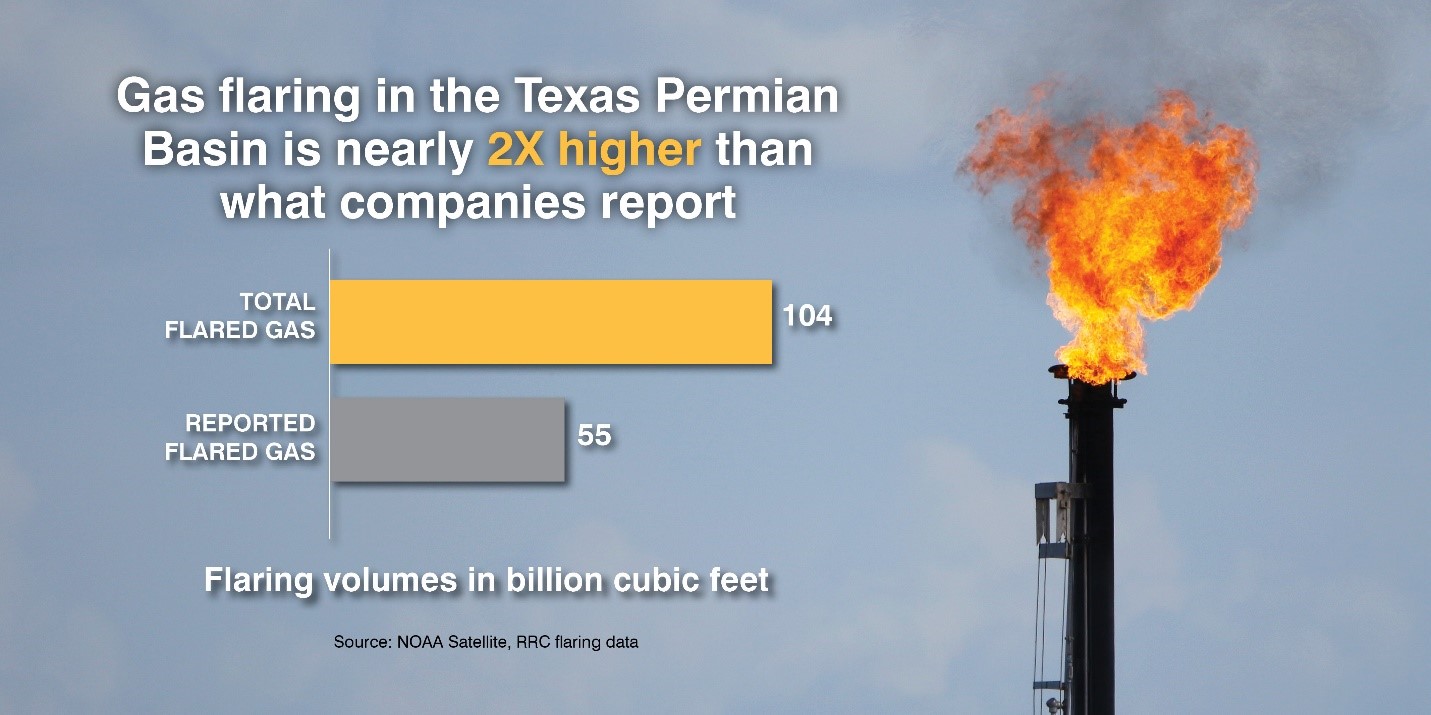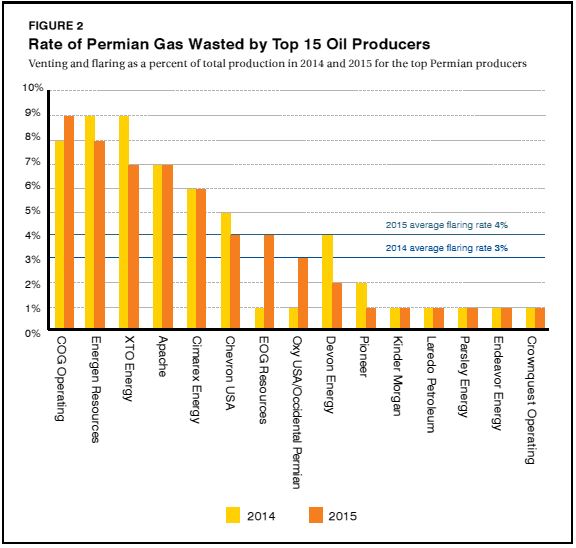Last month the Environmental Defense Fund released an analysis of NOAA satellite data estimating volumes of gas flared in the Permian Basin in 2017. Its findings: operators report half of the amount of gas actually flared.
104 Bcf of gas is enough to serve all needs of Texas’ seven largest cities – $322 million worth of gas. The State also does not collect severance tax on that gas.
Operators must obtain permits to flare gas and report volumes flared. The RRC has not denied any permits. Between 2016 and May 2018, the RRC issued more than 6,300 flaring permits in the Permian. Between 2008 and 2010, the RRC issued fewer than 600 flaring permits for all of the state.
EDF’s analysis also compared the top 15 oil producers in the Permian (click on image to enlarge):
Last October S&P Global Market Intelligence issued an analysis of flaring in the Permian Basin and the Eagle Ford. It also relied on satellite data and a NOAA algorithm that estimates flared volumes. Its analysis concluded that in 2017 Texas operators flared 163 Bcf of gas, about 2.6% of the state’s natural gas production. NOAA data indicates that Operators may have flared nearly 1 Tcf of gas from 2012 to 2017. The analysis also remarked on the difference between reported volumes of flared gas in Texas – 1.6% of production in 2017 – and NOAA estimates of 2.6%. (S&P Global’s report online has a cool graphic showing rates of flaring over time on a map of Texas.)
In contrast, S&P Global found closer agreement between NOAA and state data in North Dakota, where the Bakken production occurs – but still under-reporting of flared volumes. North Dakota regulators have sought to reduce flaring and fine violators, planning to require producers who exceed allowed flaring levels of 15% of production to shut in their wells until pipeline infrastructure can be built to market the gas.
EDF’s report also analyzed flared gas on state-owned University Lands, more than 2 million acres in the Permian. University Lands collects royalties on flared gas. EDF concluded that UL has a lower rate of flaring on its wells – 2.75% – than the overall Permian average of 4.4%. A higher degree of lease management and the requirement to pay royalties on the gas flared likely correlated to better performance.
Both EDF and S&P Global concluded that state regulators should incorporate NOAA satellite data into their regulatory oversight to identify violators. EDF also recommended that operators be required to pay state severance tax on flared gas. EDF’s other recommendations included requiring best flaring technologies, eliminating the duration of flaring permits, and encouraging technologies that capture the gas onsite.
Yesterday the three commissioners of the Texas Railroad Commissioners, Ryan Sitton, Christi Craddick and Wayne Christian, appeared before the Texas Senate Natural Resources and Economic Development Committee and were questioned about these reports that methane emissions were “much higher than the EPA predicted in West Texas.” All said they did not believe those reports. Sitton said he thought the volumes reported to the RRC are “very close to accurate.” Craddick said she was “not sure if [the reports] are accurate or not.” Collin Leyden of EDF commented that the commissioners “seem to dismiss the reports on the grounds they believe that the data they have is correct. I did not hear any sort of technical analysis of the satellite data indicating they had found any sort of flaws or errors.”
 Oil and Gas Lawyer Blog
Oil and Gas Lawyer Blog



